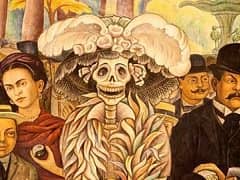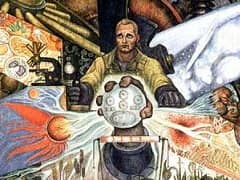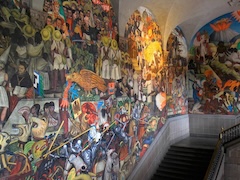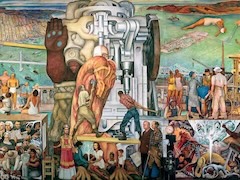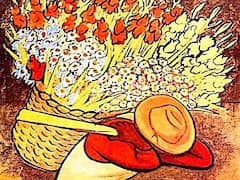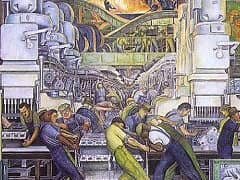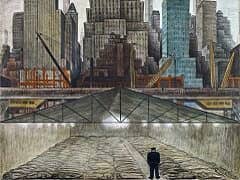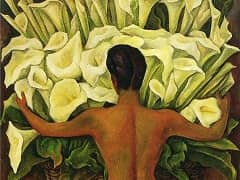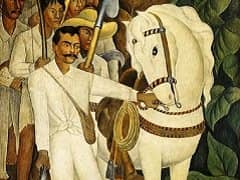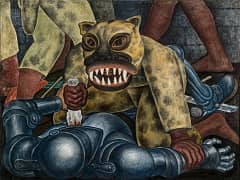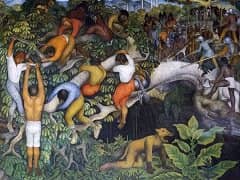Portrait of Two Women, 1914 by Diego Rivera
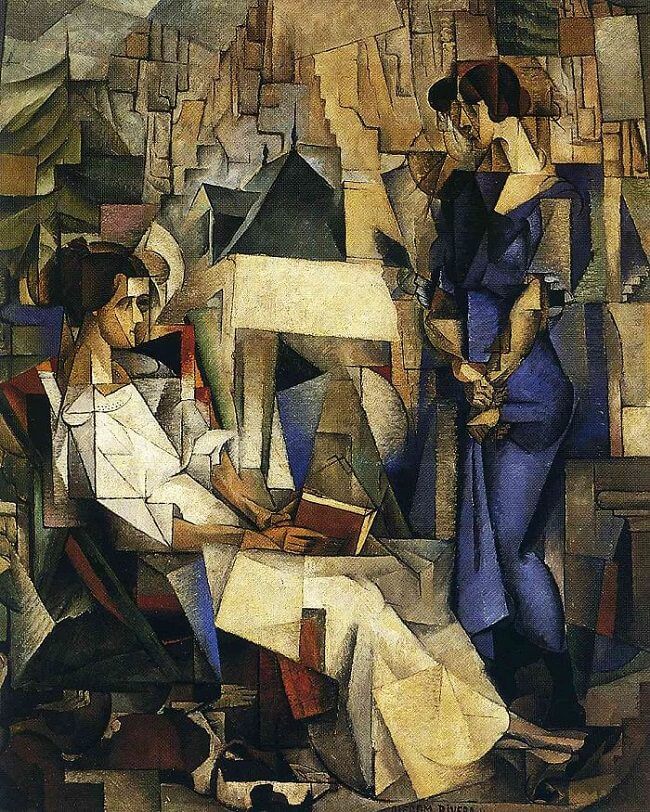
During his time abroad, Rivera drew upon the radical innovations of cubism, inaugurated a few years earlier by Picasso and Georges Braque. Rivera adopted their dramatic fracturing of form, use of multiple perspective points, and flattening of the picture plane, and also borrowed favorite cubist motifs, such as liqueur bottles, musical instruments, and painted wood grain. Yet Rivera's cubism is formally and thematically distinctive. Characterized by brighter colors and a larger scale than many early cubist pictures, his work also features highly textured surfaces executed in a variety of techniques. The paintings on view, produced during a period that coincided with both the Mexican Revolution and World War I, reflect Rivera's expatriate role and explore issues of national identity. Many incorporate souvenirs of Mexico from afar and are infused with revolutionary sympathy and nostalgia. But these references to his native land are often embedded within canvases that refer to new Spanish, French, or Russian allegiances.

